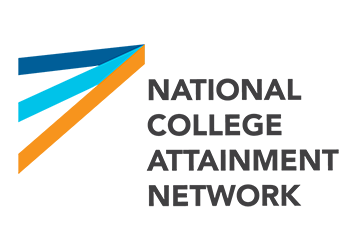By Caroline Doglio, National College Attainment Network

It’s that stressful time of the year again: new classrooms, new students, and new beginnings. With this academic year lining up to be the closest to our old definition of “normal” since the beginning of the COVID-19 pandemic, it could be daunting to prepare. But with a scarce 10 months to prepare seniors for graduation and what comes after it, NCAN is here to help everyone involved in college and career readiness to prepare for potential hurdles.
NCAN has a college and career readiness calendar that K-12 districts, schools, and partners can use to plan and find resources to best facilitate their work. The interactive calendar begins with the summer before senior year and goes all the way until the summer after graduation. It is broken down by categories such as data, financial aid/FAFSA, summer melt, etc. It is also available as a PDF.
The calendar might not be perfect for you and your college and career readiness needs (what is, really?), so there is no need to follow it to a T. But it can be a great resource for any identified goals or areas of need your district, school, or program is focusing on this academic year.
Earlier this summer, NCAN released “Key Questions to Ask Before the School Year Starts.” The questions for district and school leaders, counselors, or anyone involved in students’ academics could ponder paired with resources that could address blind spots. The four questions were:
- Who’s focused on college career readiness? Who else should be?
- How am I getting feedback from students about their postsecondary plans?
- Where are my college-bound students likely to matriculate?
- What does my plan for FAFSA completion look like this academic year?
The last resource here to highlight is one we also highlighted last September: “4 for the Fall: A Blueprint for supporting the High School Class of 2021.” While the name might be a little outdated, the advice it has to offer continues to be relevant:
- Understanding students’ postsecondary intentions and needs through survey data
- Obtaining and analyzing postsecondary outcomes data from the National Student Clearinghouse
- Increasing access to financial aid by improving Free Application for Federal Student Aid (FAFSA) completion rates
- Examining current actives around fall milestones, and pivoting to virtual where possible
The guide is paired with resources relevant to each point.
After multiple academic years full of uncertainty and wariness, 2022-23 is looking to be the most hopeful. This hope paired with some lingering justifiable concern is leading up to an exciting school year. What we do know for sure is that seniors will continue to need resources in terms of postsecondary plans and the resources, and the questions outlined above can jumpstart a very successful year.
RELATED ARTICLES:
NCAN Guest Blog: Key Questions to Ask Before the School Year Starts
NCAN Guest Blog: How to Use Fit and Match to Increase Student Success
NCAN Guest Blog: Summer is the time to build strong pathways between K-12 and higher ed
